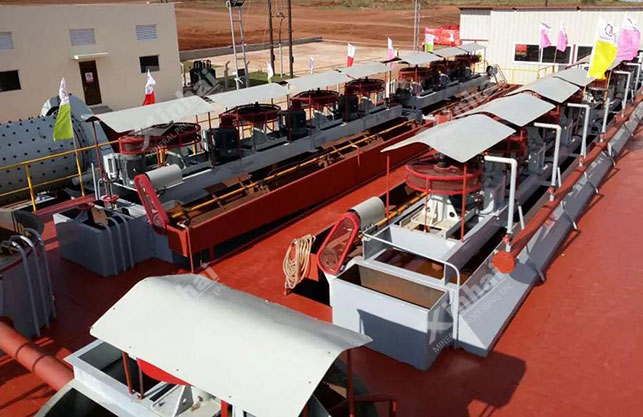Kaolin is widely used in paper making and ceramic industry. Through flotation, impurities such as quartz, iron and titanium can be removed from kaolin. The common flotation methods for kaolin are as follows.
1. Flotation separation of kaolin and quartz
The positive flotation method is generally adopted. Dodecylamine, triethanolamine and pyridine are used as collectors of kaolin, and lignosulfonate is used to inhibit silica and other silicate minerals, as well as iron minerals. The pH value is controlled at 3.0~3.1, and the pulp concentration is about 10%. The disadvantage of this method is that the foam is sticky and difficult to control, and effective dispersants need to be added.

2. Flotation separation of kaolin from iron and titanium minerals
Generally, reverse flotation method is adopted, ammonium sulfate is used to inhibit kaolin, and fatty acid (or petroleum sulfonate) collectors are used to collect iron (Fe2O3), titanium (TiO2) and other impurities. If the particle size of iron and titanium impurities is fine, the carrier reverse flotation method can be used. The carrier can use calcite powder (CaCO3, - 320 mesh) to carry fine iron and titanium impurities to float. The floating foam product is discarded, and the product in the tank is kaolin concentrate. The carrier can be reused for 8-9 times. When appropriate, separate the foam from the carrier and reuse it. The pH value during flotation is 9.0.
3. Flotation separation of kaolin and pyrite
Sometimes iron impurities in kaolin exist in the form of pyrite. In this case, sodium hexametaphosphate is used as dispersant and xanthate as collector to remove pyrite impurities.

There are four common beneficiation processes for hard kaolin:
Process 1: raw ore → crushing → pulp tamping → cyclone classification → centrifuge classification → flaking → bleaching → paper coating grade products;
Process 2: raw ore → crushing → roasting → slurry tamping → cyclone grading → peeling → centrifuge grading → paper coating grade product/filler grade product;
Process 3: raw ore → crushing → flaking → drying → calcination → depolymerization → paper-making coating grade products/filler grade products;
Process 4: Kaolin bleaching process, commonly used sulfuric acid plus sodium hydrosulfite, the reaction equation is:
There are two common beneficiation processes for soft kaolin:
Process 1: raw ore → crushing → pulp tamping → cyclone grading → selective flocculation → bleaching → high-quality paper/ceramic products;
Process 2: raw ore → crushing → slurry tamping → cyclone classification → centrifuge classification → flaking → magnetic separation → paper coating products.